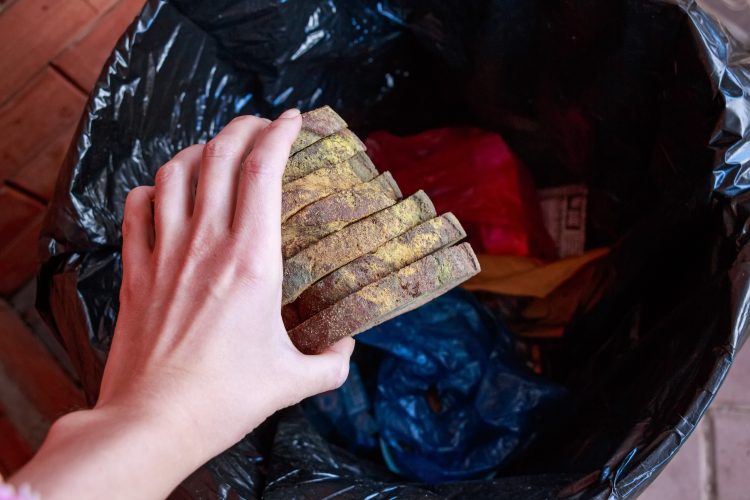Reducing food loss and waste through preservation
- Like
- Digg
- Del
- Tumblr
- VKontakte
- Buffer
- Love This
- Odnoklassniki
- Meneame
- Blogger
- Amazon
- Yahoo Mail
- Gmail
- AOL
- Newsvine
- HackerNews
- Evernote
- MySpace
- Mail.ru
- Viadeo
- Line
- Comments
- Yummly
- SMS
- Viber
- Telegram
- Subscribe
- Skype
- Facebook Messenger
- Kakao
- LiveJournal
- Yammer
- Edgar
- Fintel
- Mix
- Instapaper
- Copy Link
Posted: 19 April 2022 | Emma Cahill | No comments yet
The majority of food waste occurs in the home; here, Emma Cahill explains how manufacturers can employ clever tactics to help consumers be less wasteful.


Food waste reduction is top of mind for consumers and the turbulent global issues of our times have accelerated their demand for less waste. In fact, 67 percent of global consumers are actively trying to reduce their food waste as a result of the COVID-19 pandemic1. Moreover, almost as many (60%) are expressing an increased concern for food safety due to the virus.2
Food safety in a circular economy
We talk about reducing waste in the linear economy through practices such as food protection and preservation and creating a circular economy via reusing valuable resources that would otherwise end up in waste streams. But we don’t often hear about the food safety implications this may invite.
Whether formulating, reformulating, or upcycling, any product destined for consumption must have food safety embedded throughout its lifecycle. Safety first, quality always is our motto at Kerry.
Use by and best before date extension for our customers are backed by scientific data, with challenge and shelf-life studies demonstrating the necessary inhibition of microbes to enable this shelf-life extension. Proper supply chain conditions, storage and consumer education also ensure that a product is at its very best when consumed.
Extra days of shelf life mean more chances for a food to be consumed, rather than end up as waste. It can extend the reach of a producer’s supply chain, as well as reduce the number of trucks on the road and deliveries needed.
Research shows that about half of food waste can be reduced by shelf-life extension/preservation. Why only half? It is because the other half is linked to consumer behaviour!
Preservation is key to reducing food waste
Kerry is leveraging its portfolio and expertise to make a meaningful difference in reducing food waste and loss. For example, in bread and bakery (the category with the highest volume of waste globally), we can add extra shelf-life days – this alone can reduce almost half of consumer waste.
Solutions include mould inhibition using preservation, emulsifiers to stop products from going stale, and enzymes which will solve early food loss reduction to create better uniformity and fewer discards.
In meat and plant protein (the categories with the highest economic and environmental value of food waste globally), we focus on food safety improvements and spoilage prevention. We can extend a product’s ability to feed more people and reduce how often it goes to waste not just by means of preservation but also by protecting taste and texture over shelf life and enabling easier storage.
Our customers are people who inspire the world with sustainable, nutritious and delicious food. To make sure that food reaches the consumer at its very best is where we come in. We maximize food shelf life and appeal, while also minimising food loss. Where we cannot reduce food waste, we can use our expertise to reuse the planet’s resources in a circular way to extend nutritional reach.
Upcycling
When a product can be safely upcycled in the consumer’s home (think bananas into banana bread), or become raw materials in the industry to create something new (think coffee grinds into coffee flavours), this also greatly reduces food waste.
The key to ensuring food safety is capturing the raw materials within a food-grade environment and as early as possible to avoid any contamination or degradation risks. We see success with the circular partnerships at the source; we have partnered with customers to help them reuse resources that are ending up in their waste streams.
Taste and waste are important
In formulating these new products, a full food safety, quality and sensory analysis is key to delivering a great final product back to the market. Alongside safety and quality, we believe we deliver the best in preservation, taste and nutrition. Taste is fundamental and is the main motivator for consumers when repurchasing food and beverage products.
From farm to fork, we partner with our customers, defining next generation solutions to cultivate a world of sustainable nutrition. Because creating inspired food is only part of the challenge. It’s equally important not to waste it.
References
- FMCG Gurus 2020
- Kerry Proprietary Research, Food Safety Fundamentals 2021
About the author
Emma Cahill leads Strategic Marketing for Kerry’s global Food Protection and Preservation business. She has been with Kerry since 2017, working globally from Ireland and now the US. Emma is a strategic thinker who is passionate about food loss and waste elimination.
She has a BSc (Hons) in Agricultural Science and an MSc in International Marketing Practice; both from University College Dublin, Ireland.









